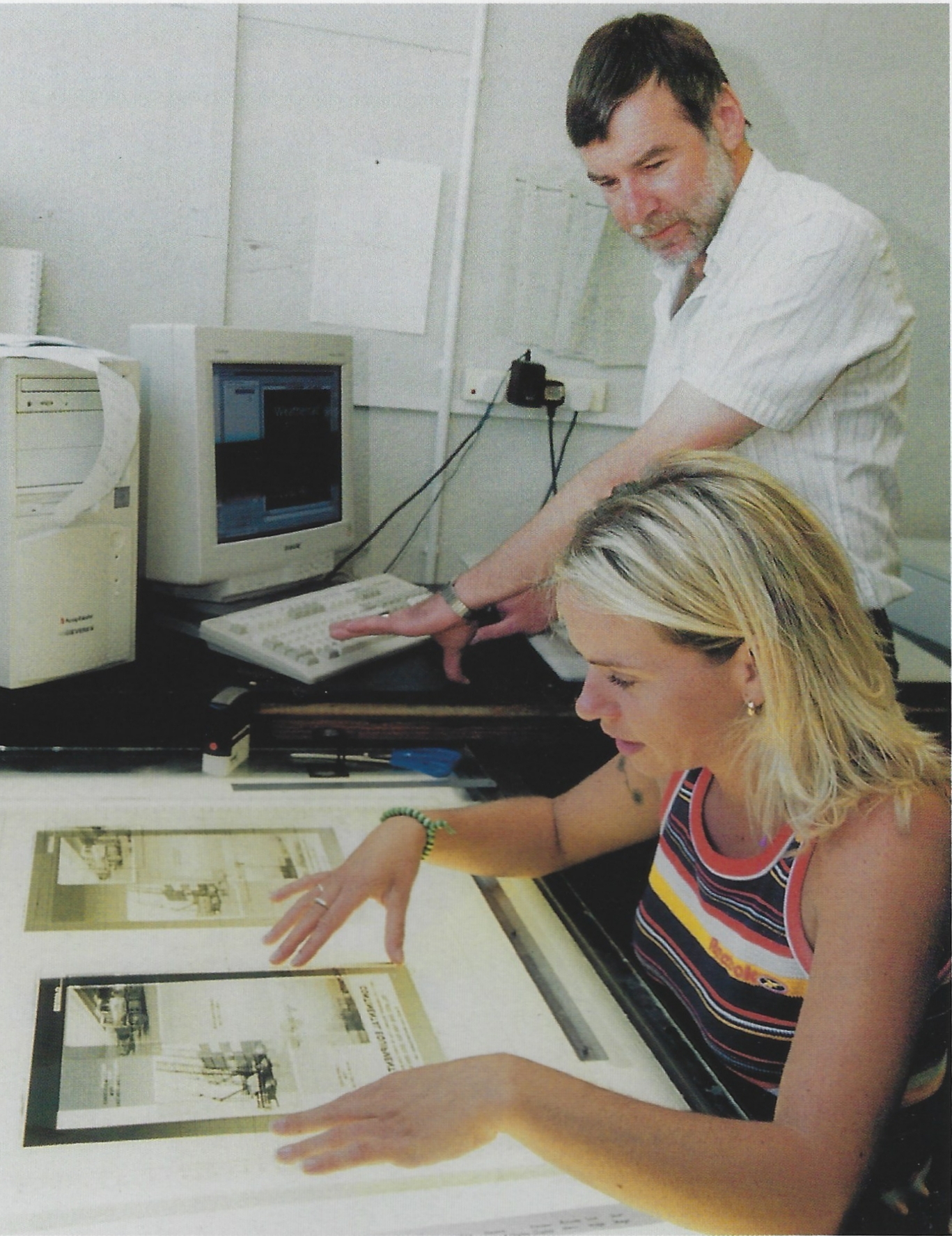Special Collections & Archives has been working with Appletye – an artists’-led organisation based in Margate – to support their mission to record the Isle of Thanet’s rich printing heritage. In lieu of a physical display in Spring 2020 these guest blogs by Dan Thompson and Dawn Cole are our virtual equivalent – we hope you enjoy!
There were a variety of jobs in the pre-digital printing industry, meaning works like the Thanet Press employed large numbers, and needed specialist suppliers so supported small printers, bookbinders, and other trades locally. The key jobs, as a compositor laying out type, proof reading pages, or working with the machines, were highly skilled.
A printer’s apprenticeship lasted seven years, and involved study at an approved college as well as practical work at a print works. Locally, apprentices studied at Thanet School of Arts and Crafts, Canterbury College of Arts, or Maidstone College of Arts where they learned layout and design, typography, and to lay out lead type letter-by-letter.
From the 1950s, the print industry underwent radical changes, from traditional ‘hot metal’ letterpress printing to lithographic, and then computer typesetting and digital printing.
For print workers, that meant constant adaptation and learning new skills.
“Printing’s changed more than any other trade. It’s changed from a room full of hot metal to an office job, but you need the same experience and expertise.” Jim Bellamy, Thanet Press
A larger print works like The Thanet Press was inevitably about more than the job: it became a place where couples met and got married. Workers joined amateur theatrical groups, footballs teams, or showed with the horticultural society. And people created their own welfare state, through strong unions and paying into the ‘sick club’. It was common to find siblings working alongside each other, or generations of the same family working in print together.
However, the print industry was old, established – and very male. The unions wouldn’t allow women to operate the printing presses, and they were kept to jobs in the bindery, finishing and stitching or stapling print jobs.
“The bindery had about twice as many women as men working in it … It was a very companionable environment.” Pat Davies, Thanet Press
About the Print Works project:
Print Works is a year-long project from Appletye, an arts and heritage organisation. The project explores the history of the print industry on the Isle of Thanet, taking inspiration from two former companies and the heritage of the sites they occupied at Thanet Press, Union Crescent, Margate and Martell Press, Northdown Road, Cliftonville. At the heart of the project are archives from the two Margate firms, recording the stories of the people who worked there and the work they did.
Using the Print Works archive:
The Print Works archives include hundreds of examples of material printed in a pre-digital age, including much related to Margate, Broadstairs, and Ramsgate. It includes print for seaside hotels, entertainment venues, and tourism businesses.
The archive also includes documents relating to working in the print industry in the 20th century, from apprenticeship indentures to certificates from a print factory’s Horticultural Club. There are documents relating to design, typography, and the move from analogue processes like typography to digital design and print.
The archive is new, so includes primary material not used before in academic research. It is held at a studio in Margate. For more information email dawn@appletye.org


